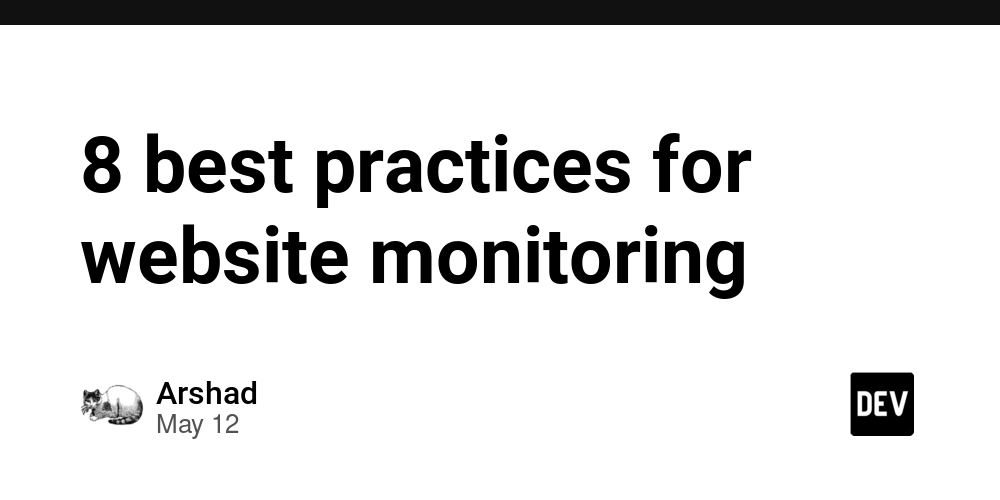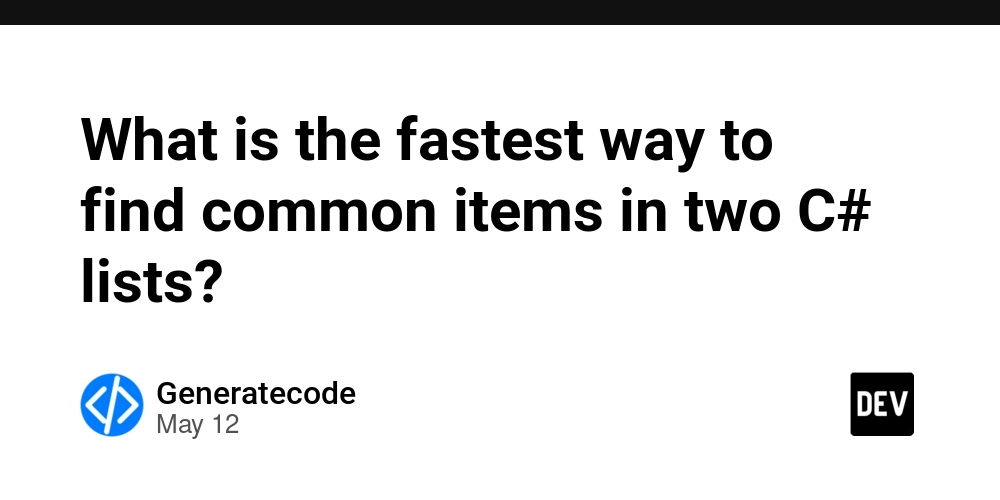JS Journey: A Beginner’s Roadmap to Web Mastery
JavaScript is one of the most powerful, flexible, and in-demand programming languages in the world of web development. If you’re looking to embark on a journey toward becoming a web development master, learning JavaScript is essential. Whether you're an aspiring developer, a student, or someone looking to transition into the world of coding, this roadmap will guide you through the essential steps to get started with JavaScript Tutorial and help you grow your skills. In this post, we’ll explore what makes JavaScript such an important language, how you can start learning it, and the key concepts you need to master on your journey to web development proficiency. Why JavaScript? Before we dive into the specifics of the tutorial, it's important to understand why JavaScript is so crucial. The language powers most of the interactive elements we see on the web today. From simple tasks like form validation to complex, single-page web applications (SPAs) like Gmail or Twitter, JavaScript plays a significant role in bringing websites to life. JavaScript works alongside HTML and CSS to create dynamic, interactive web pages. While HTML provides structure and CSS controls style, JavaScript adds the behavior and interactivity. In fact, it’s the only programming language that can run in the browser, making it a cornerstone of modern web development. Starting the Journey: Setting Up Your Development Environment Before you can start writing JavaScript, you'll need a few basic tools to help you code efficiently: Text Editor: You’ll need a code editor to write your JavaScript code. Popular choices include Visual Studio Code (VS Code), Sublime Text, and Atom. These editors are lightweight, customizable, and offer features like syntax highlighting and code completion. Web Browser: JavaScript runs directly in the browser, so you’ll need a browser like Google Chrome, Firefox, or Edge. Chrome, for instance, comes with developer tools that allow you to test and debug your JavaScript code in real-time. Developer Tools (Console): Browsers have built-in developer tools (DevTools) that allow you to test your JavaScript code without needing to refresh your webpage. You can open the console (press F12 or Ctrl+Shift+I on most browsers) to enter JavaScript code and see the results instantly. Step 1: Understanding the Basics of JavaScript Once you’ve set up your environment, it’s time to dive into the basics of JavaScript. As a beginner, you’ll want to start by understanding the core concepts. Here are the fundamental areas to focus on: Variables and Data Types In JavaScript, variables are used to store data values. You can define a variable using the let, const, or var keyword. For example: let name = "John Doe"; const age = 30; JavaScript has several data types, including: Strings: Text values, like "Hello World". Numbers: Integer or floating-point values, like 25or 3.14. Booleans: True or false values, like trueor false. Arrays: A list of values, like [1, 2, 3]. Objects: A collection of key-value pairs, like {name: "John", age: 30}. 2. Operators and Expressions Operators in JavaScript allow you to perform operations on variables and values. For example: let x = 10; let y = 5; let sum = x + y; // Addition let difference = x - y; // Subtraction let product = x * y; // Multiplication let quotient = x / y; // Division You’ll also learn about comparison operators (==, ===, !=, ) and logical operators (&&, ||, !) as you progress. 3. Control Flow: Conditions and Loops To make decisions in your code, you’ll need to use conditional statements, like if, else if, and else: let time = 20; if (time < 12) { console.log("Good morning!"); } else { console.log("Good evening!"); } You’ll also work with loops, like for and while, to execute a block of code multiple times: for (let i = 0; i < 5; i++) { console.log(i); } Step 2: Intermediate Concepts Once you're comfortable with the basics, it’s time to dive into more intermediate JavaScript concepts that are critical for building dynamic websites. 1. Functions Functions are blocks of code that perform a specific task. You define a function using the functionkeyword: function greet(name) { console.log("Hello, " + name + "!"); } greet("John"); Functions can also return values: function add(a, b) { return a + b; } let result = add(5, 3); console.log(result); // 8 2. DOM Manipulation JavaScript interacts with HTML elements through the Document Object Model (DOM). Using JavaScript, you can select and manipulate elements on a webpage: document.getElementById("myButton").addEventListener("click", function() { alert("Button clicked!"); }); You can use the DOM to create interactive elements, such as buttons, forms, and animations. 3. Events JavaScript allows you to handle user interactions, such as clicks, keyboard presses, and mouse movements. You can add event listeners t

JavaScript is one of the most powerful, flexible, and in-demand programming languages in the world of web development. If you’re looking to embark on a journey toward becoming a web development master, learning JavaScript is essential. Whether you're an aspiring developer, a student, or someone looking to transition into the world of coding, this roadmap will guide you through the essential steps to get started with JavaScript Tutorial and help you grow your skills.
In this post, we’ll explore what makes JavaScript such an important language, how you can start learning it, and the key concepts you need to master on your journey to web development proficiency.
Why JavaScript?
Before we dive into the specifics of the tutorial, it's important to understand why JavaScript is so crucial. The language powers most of the interactive elements we see on the web today. From simple tasks like form validation to complex, single-page web applications (SPAs) like Gmail or Twitter, JavaScript plays a significant role in bringing websites to life.
JavaScript works alongside HTML and CSS to create dynamic, interactive web pages. While HTML provides structure and CSS controls style, JavaScript adds the behavior and interactivity. In fact, it’s the only programming language that can run in the browser, making it a cornerstone of modern web development.
Starting the Journey: Setting Up Your Development Environment
Before you can start writing JavaScript, you'll need a few basic tools to help you code efficiently:
Text Editor: You’ll need a code editor to write your JavaScript code. Popular choices include Visual Studio Code (VS Code), Sublime Text, and Atom. These editors are lightweight, customizable, and offer features like syntax highlighting and code completion.
Web Browser: JavaScript runs directly in the browser, so you’ll need a browser like Google Chrome, Firefox, or Edge. Chrome, for instance, comes with developer tools that allow you to test and debug your JavaScript code in real-time.
Developer Tools (Console): Browsers have built-in developer tools (DevTools) that allow you to test your JavaScript code without needing to refresh your webpage. You can open the console (press F12 or Ctrl+Shift+I on most browsers) to enter JavaScript code and see the results instantly.
Step 1: Understanding the Basics of JavaScript
Once you’ve set up your environment, it’s time to dive into the basics of JavaScript. As a beginner, you’ll want to start by understanding the core concepts. Here are the fundamental areas to focus on:
- Variables and Data Types
In JavaScript, variables are used to store data values. You can define a variable using the
let,const, orvarkeyword. For example:
let name = "John Doe";
const age = 30;
JavaScript has several data types, including:
- Strings: Text values, like
"Hello World". - Numbers: Integer or floating-point values, like
25or3.14. - Booleans: True or false values, like
trueorfalse. - Arrays: A list of values, like
[1, 2, 3]. - Objects: A collection of key-value pairs, like
{name: "John", age: 30}.
2. Operators and Expressions
Operators in JavaScript allow you to perform operations on variables and values. For example:
let x = 10;
let y = 5;
let sum = x + y; // Addition
let difference = x - y; // Subtraction
let product = x * y; // Multiplication
let quotient = x / y; // Division
You’ll also learn about comparison operators (==, ===, !=, <, >) and logical operators (&&, ||, !) as you progress.
3. Control Flow: Conditions and Loops
To make decisions in your code, you’ll need to use conditional statements, like if, else if, and else:
let time = 20;
if (time < 12) {
console.log("Good morning!");
} else {
console.log("Good evening!");
}
You’ll also work with loops, like for and while, to execute a block of code multiple times:
for (let i = 0; i < 5; i++) {
console.log(i);
}
Step 2: Intermediate Concepts
Once you're comfortable with the basics, it’s time to dive into more intermediate JavaScript concepts that are critical for building dynamic websites.
1. Functions
Functions are blocks of code that perform a specific task. You define a function using the functionkeyword:
function greet(name) {
console.log("Hello, " + name + "!");
}
greet("John");
Functions can also return values:
function add(a, b) {
return a + b;
}
let result = add(5, 3);
console.log(result); // 8
2. DOM Manipulation
JavaScript interacts with HTML elements through the Document Object Model (DOM). Using JavaScript, you can select and manipulate elements on a webpage:
document.getElementById("myButton").addEventListener("click", function() {
alert("Button clicked!");
});
You can use the DOM to create interactive elements, such as buttons, forms, and animations.
3. Events
JavaScript allows you to handle user interactions, such as clicks, keyboard presses, and mouse movements. You can add event listeners to HTML elements to trigger actions when events occur:
document.querySelector("button").addEventListener("click", function() {
console.log("Button was clicked!");
});
Step 3: Advanced Concepts and Tools
As you grow more comfortable with JavaScript, it’s time to explore more advanced concepts:
Asynchronous JavaScript: Learn about Promises, async/await, and how JavaScript handles asynchronous tasks like fetching data from a server using
fetch().ES6+ Features: Modern JavaScript (ES6 and beyond) introduces powerful features like arrow functions, template literals, destructuring, and modules.
Frameworks and Libraries: Once you’ve mastered JavaScript basics, consider learning libraries like React, Vue, or Angular, which make building dynamic web applications easier.
Conclusion: Keep Practicing and Building
The journey to mastering JavaScript takes time, but with consistent practice, you’ll make significant progress. Don’t be afraid to experiment, build projects, and tackle new challenges. As you grow your skills, you'll begin to see how JavaScript powers the modern web, and you'll be well on your way to becoming a web development expert.












































































































































































![[The AI Show Episode 156]: AI Answers - Data Privacy, AI Roadmaps, Regulated Industries, Selling AI to the C-Suite & Change Management](https://www.marketingaiinstitute.com/hubfs/ep%20156%20cover.png)
![[The AI Show Episode 155]: The New Jobs AI Will Create, Amazon CEO: AI Will Cut Jobs, Your Brain on ChatGPT, Possible OpenAI-Microsoft Breakup & Veo 3 IP Issues](https://www.marketingaiinstitute.com/hubfs/ep%20155%20cover.png)



































































































































































































































































_incamerastock_Alamy.jpg?width=1280&auto=webp&quality=80&disable=upscale#)
_Brain_light_Alamy.jpg?width=1280&auto=webp&quality=80&disable=upscale#)





























































































![Senators reintroduce App Store bill to rein in ‘gatekeeper power in the app economy’ [U]](https://i0.wp.com/9to5mac.com/wp-content/uploads/sites/6/2025/06/app-store-senate.jpg?resize=1200%2C628&quality=82&strip=all&ssl=1)




























































































